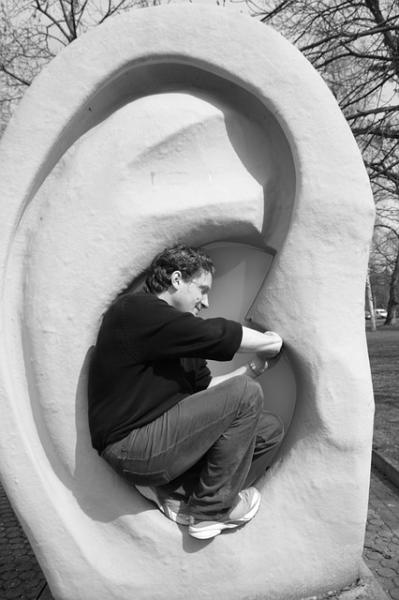Tinnitus, a humming or ringing sound you hear when no sound is actually present is a clinical condition that affects about 15% of the US population. It is the most common service-connected disability of our veterans. Like most diseases, it too lives on a spectrum, from annoying to disability. A new study in Science Translational Medicine offers what might be an effective treatment for a disease that has few good treatment options.
Tinnitus is a neurologic problem, a confusion in integrating sounds, dampening the sounds of our body while enhancing sounds we wish to hear. For a variety of reasons the brain cells involved in, not the actual hearing, but the translation of those sounds into meaningful noise act synchronously and more actively, creating the perception of that hum. About 70-80% of individuals affected by tinnitus can temporarily reduce those sounds by clenching their jaw or sticking out their tongue, or changing their neck position – these bodily maneuvers influence the culprit brain area to be a bit less synchronous and hyperactive, to better integrate the audio soundtrack of our lives. The study looked at 20 of these individuals and employed what we might think of like a Pavlovian device. The equipment delivered a sound to the patient's ears that mimic both the frequency and loudness of their tinnitus and almost simultaneously delivered a small electrical impulse to the area of their head or neck that they had found reduce their symptoms. The study reports on their work both with guinea pigs and humans, but let’s be selfish and consider how it worked for us. (Spoiler alert, it was the same for the guinea pigs)
20 patients underwent a double-blind crossover study in which half were treated with the device for four weeks, and half were treated with the sound, but not the electrical impulse. After a four week washout period, the groups were switched; the active group treated with the placebo and vice versa. Patients used the equipment for 30 minutes a day and reported weekly on their symptoms and took a survey on the impact of those symptoms on their daily life.
- Active treatment reduced the loudness of the tinnitus as measured by matching their perception of tinnitus loudness to an external sound. Tinnitus decreased by about 15 -20% by the fourth week of active treatment, but this effect was lost over time.
- Active treatment improved the quality of life, measured by the survey, for all patients; and for half, the improvement was clinically meaningful. Even when tinnitus did not completely resolve, patients felt that the tinnitus “less obtrusive and easier to ignore.”
- Four patients had improved quality of life while receiving sham treatment.
The study is small, the results pertain to only a portion of individuals affected by tinnitus, those who can reduce the symptoms by bodily maneuvers. But it does appear to be a promising line of investigation.
Source: Auditory-somatosensory bimodal stimulation desynchronizes brain circuitry to reduce tinnitus in guinea pigs and humans. Kendra L Marks et. Al. Science Translational Medicine 10, eaal3175 (2018) 3 January 2018




